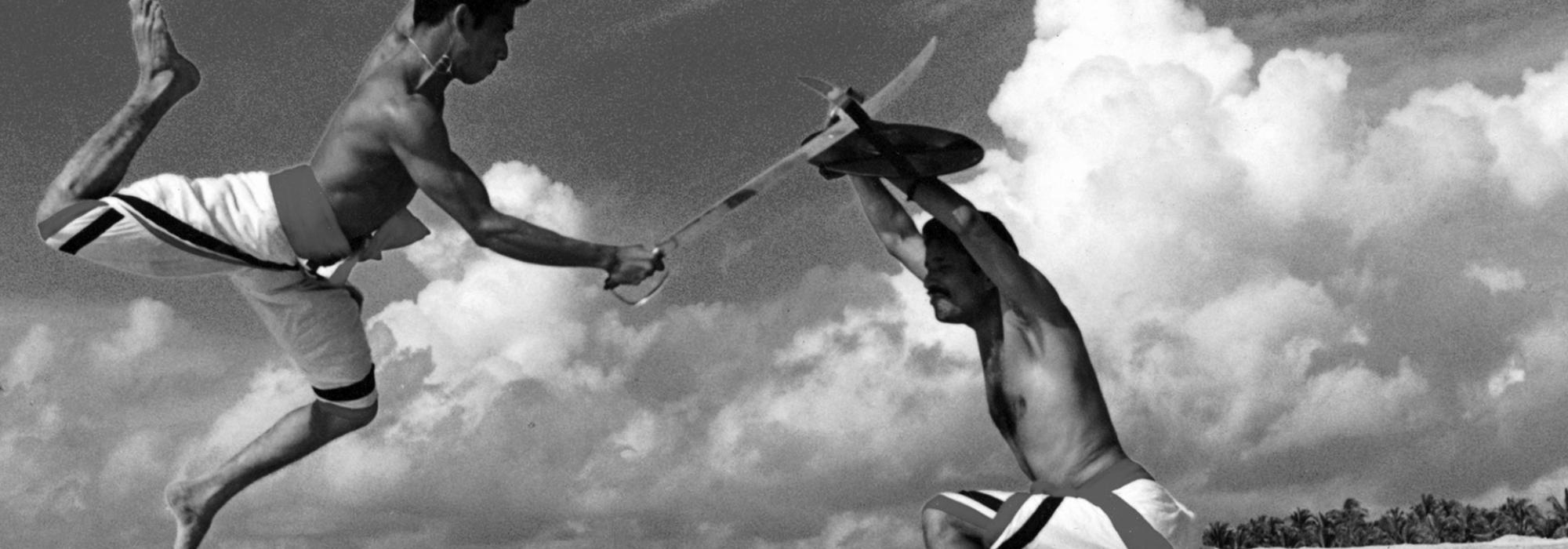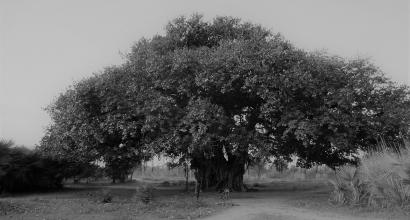For several years now, there has been an attempt to distort India’s history, culture, and traditions starting from the Islamic invaders, British imperialism, the missionaries, and more recently, the Marxist historians and so-called intellectuals. This trend continues unabated even to this day.
At the root of these distortions lies a ruthless and sustained assault on everything that represents bharatiya samskrti – be it traditional values, time-tested customs, and bharatiya institutions. How is it then, in spite of twelve centuries of sustained assault, sanatana dharma has continued to survive and thrive?
World history shows that most ancient cultures and civilizations that encountered the Abrahamic religions – specially the proselytizing religions of Christianity and Islam – were wiped out within decades. Our civilization – and perhaps the Chinese – are the only exceptions. The land of Bharata is the sole survivor of the brutality inflicted upon it over millennia by fanatics who were opposed to natural living and inclusive philosophy and ways of life.
As an illustration to the sustained consequence of the calculated distortions, we can see this statement made by Syed Shahbuddin:
Because Hindus fear the Muslims, they have fallen on the path of secularism. Each time they were conquered by Muslim soldiers, they have learnt to sink and bend like powerless blades of grass. This can be seen several times in our history.
[Syed Shahbuddin: Sunday, 20 March 1983. Paraphrased. Translated from Dr. S.R. Ramaswamy’s preface to the Kannada original, Bharatiya Kshaatra Parampare]
If Shahbuddin’s understanding of Indian history is accurate, isn’t it strange that these ‘powerless blades of grass’ are still the majority in Bharata?
To find an answer to this question, we have to explore the ancient concept of kshaatra. This Sanskrit word can be loosely translated as ‘spirit of valour,’ ‘courage,’ ‘warrior spirit,’ ‘heroism,’ ‘selfless courage (in the context of war),’ etc.
In an attempt to whitewash the Islamic invasion and protracted rule of India and to downplay the greatness of India before the entry of Islam, a horde of Marxist historians began rewriting our history. Hindu empires of the pre-Islamic era were portrayed as bloodthirsty and oppressive. Hindu empires that challenged or resisted Islamic invasion were painted as rebels and upstarts.
However, the British took this to a truly devious level. They meticulously classified what they called the 'martial races' of India and then demonized those 'races' that posed the gravest physical threat first to the East India Company and then the Empire; or those 'races' that rebelled against them, the Nairs of Kerala being a case in point.
The history of the word 'thug,' which eventually acquired an abusive connotation, one which sustains till date, originates in the systematic campaign of vilification by the British of these proud and unyielding warriors. This slander campaign was successful. The Hindu society fell for it and began viewing the ‘thugs’ as evil people. And so it was with countless such ‘races.’
In his The Martial Races of India, Lt. Gen. Sir George MacMunn, a Colonel Commandant of the Royal Artillery writes in unequivocal terms:
India unlike almost any other country has a vast mass of unwarlike people whose hand has never kept the head. In this class must be mustered many who have the brains and aptitude to assimilate Western education far more rapidly than the more virile races. But it is these virile races that have dominated India in the past, and… would do so again if British control were removed. It is moreover in these forceful classes that the real future of India for good must lie… [Emphasis mine]
The general prohibition against and/or the ridiculous process of obtaining a gun license in India can be traced back to this calculated British policy of de-arming Indians.
Independent India has done worse in this regard. The first blow came in the form of the humiliation at the hands of China in 1962. And in our own times, a powerful section of India’s ‘elite class’ who have assimilated Western education “far more rapidly” (to borrow from MacMunn) continues to disparage their own armed forces for the crime of defending their own nation against enemy nations sworn to destroy their motherland.
The discourse that emerged during and in the aftermath of the Kargil war and the repeated Pakistani armed transgressions are illustrative cases in point. A powerful former editor of the Indian Express went so far as to concoct a phony ‘news report’ that the former Army Chief Gen. V. K. Singh was planning a coup.
Indeed, a nation that forgets its warriors and military heroes will witness the weakening and assured destruction of its ability to defend itself and will neither have integrity nor a future. No self-respecting nation—including the Bharata of yore—throughout history has denigrated its own armed forces.
Our leaders since 1947 lacked the kind of foresight exemplified by Charlie Munger’s commentary on Lee Kuan Yew’s administration:
I think that Singapore’s stepping hard on things that will grow like cancer, is the correct way to govern a country.
In other words, mistakes should not be fixed but they must be foreseen and prevented.
The biggest example of the “things that will grow like cancer” include Jawaharlal Nehru’s humiliation of Field Marshal K. M. Cariappa and favouring the inept Gen B.M. Kaul and the general destruction of our Army’s morale, which consequently led to its rampant politicization, something even the British didn’t allow.
The roots go much deeper. Much of our defence and foreign policies have stemmed from a weakness of spirit injected by Gandhi during the freedom movement, which was then made state policy by Nehru. His misguided sense of Gandhian pacifism, his love for Communism and a meaningless non-alignment policy among other blunders continue to haunt our motherland.
John Edward William says in his Augustus:
The moralist is the most useless and contemptible of creatures. He is useless in that he would expend his energies upon making judgments rather than upon gaining knowledge, for the reason that judgment is easy and knowledge is difficult. He is contemptible in that his judgments reflect a vision of himself which in his ignorance and pride he would impose upon the world. I implore you, do not become a moralist; you will destroy your art and your mind.
[From Dr. S.R. Ramaswamy’s preface to the Kannada original, Bharatiya Kshaatra Parampare]
Given this historical backdrop, it’s evident that Nehru never understood the importance of kshaatra as a powerful deterrent to war. A nation if it has to be united and peaceful internally has no option but to be armed and being militarily feared and respected on the global stage.
In India, both Gandhi and Nehru were never involved physically in any war. Both actual war and a constant preparation for it build and shape a leader’s character in fundamental ways.
Unlike in the past, today, heads of state are not expected to lead the country from the front on the battlelines facing the real prospect of death. Despite this, Western democracies have largely retained respect for and understand the importance of having a leader who has either served in the armed forces or at least possesses a healthy respect for the military. Every President hopeful in the US scores additional points with potential voters if he claims and/or demonstrates a record in military service.
Shorn of pointless analyses based on vacuous theories, the simple truth is this: the top reason the US and Russia, for example, are feared is because of their military might and their willingness to exercise it.
It is also the reason that these nations don’t want competitors: they will impose sanctions on nations that conduct nuclear tests, and deny India a seat in the nuclear club. More insidiously, they will fund our universities and think tanks and award useless degrees and PhDs all of which will basically say stuff like these: war is bad, peace at any cost, food security is more important than national security, and so on. Simultaneously, these nations are the biggest arms dealers, selling deadly weapons to all manner of terrorists and continue to invest billions in upgrading their arsenal, and bomb “unfriendly” nations back to the Stone Age.
Thankfully, our Armed Forces are one of the best in the world despite Nehruvian pacifism. It’s not enough, however, because there’s negligible investment in indigenous research and development of military technology even today.
We don’t celebrate and honour our warriors the way they deserve to be celebrated. Contrast the countless Hollywood movies and popular culture that celebrate and glorify American victories in various battles—and this deluge of celebration emanating from so young a civilization. And as to why we don’t have this culture of celebrating heroism, we can turn to the fabled historian R.C. Majumdar who wrote these words during the 1962 Indo-China war:
No one can be great without an ideal before him. Our children’s books, unfortunately, are full of useless trash; for example, writing about Rammohun Roy we only find mention of the part he played in the abolition of Suttee and not his fight against Christian missionaries. What names of heroes do we find in any of our children’s textbooks? One has to admit that there is none. We therefore think it is immediately essential to recast our textbooks. The story of the heroes given above, history of Shivaji, of Rana Pratap, of many other heroes—and now the heroes in this present war to repel the Chinese attack (1962)—Major Dhan Singh Thapa, Subedar Joginder Singh and others—should immediately be included in this. [Emphasis mine]
[From Dr. S.R. Ramaswamy’s preface to the Kannada original, Bharatiya Kshaatra Parampare]
As we’ve seen so far, this tragic state of affairs is the outcome and manifestation of at least eight decades of a weakened spirit, or in the words of Lord Krishna, क्षुद्रं हृदयदौर्बल्यम् (contemptible weakness of the spirit), which like Arjuna, our great nation must shed and recover its forgotten kshaatra.
Bharata was not always like this. The spirit and tradition of Bharata’s kshaatra dates back to the Vedas in representative verses such as this:
यत्र ब्रह्म च क्षत्रं च संयञ्चौ चरतः सह |
तं लोकं पुण्यं प्रज्ञेषं यत्र देवाः सहाऽग्निना ||
(वाजसनेयि संहिता २०.२५)The nation in which brahma (the spirit of wisdom) and kshaatra (the spirit of valor) complement and support each other, and the nation in which the deities preside together with the fire of the yajnas, I consider that nation to be virtuous.
(Vajasaneyi Samhita 20.25)
We find the following declarations in the Mahabharata:
क्षात्रो धर्मो ह्यादिदेवात् प्रवृत्त:
पश्चादन्ये शेषभूताश्च धर्मा: |२०|
अस्मिन् धर्मे सर्वधर्माः प्रविष्टाः
तस्मात् धर्मं श्रेष्ठमिमं वदन्ति |२१|
(शान्तिपर्व, अध्याय ६४)The deities first created kshaatra dharma before creating other dharmas.
Since all other dharmas are encompassed in this dharma, the wise ones regard this as the most exalted dharma.
(Shantiparva, Chapter 64, verses 20-21)
The towering historian and scholar, Dr. Radha Kumud Mookerji presciently traces the history and tradition of kshaatra thus:
The tradition of great kings and emperors goes back to the Vedas. The Rigveda tells of Sudaas who had achieved his overlordship of Rigvedic India by his victory at the Battle of Ten Kings (Daasha-raajna)…representing about forty different Rigvedic peoples.
The conception of paramount power and imperial sovereignty was so well established even in these early days that it expressed itself in appropriate technical terms, such as Adhiraja, Rajadhiraja, or Samraat, liberally used in the Vedic texts...Chandragupta [Maurya]…is the first Indian king who established his rule over an extended India, an India greater than even British India. The boundaries of this Greater India lay far beyond the frontiers of modern India along the borders of Persia. Chandragupta is again the first of the Rulers of India to be able by his conquests to join up the valleys of the Indus and the land of the five rivers with the eastern valleys of the Ganges and the Jumna in one Empire that stretched from Aria (Herat) to Pataliputra. And he is also the first Indian King who followed up this political unification of Northern India by extending his conquests beyond the barriers of the Vindhyas…to bring both North and South under the umbrella of one paramount sovereign…Chandragupta was able to rid the country of all traces of Greek occupation by 323 BC….To crown all, Chandragupta as the founder of the imperial Maurya dynasty, gives to India for the first time a continuous history as well as a unified history, a history affecting India as a whole… [Emphasis mine]
[Mookerji, Radha Kumud. Chandragupta Maurya and his Times. New Delhi: Motilal Banarasidass, 1943]
The foundation for Chandragupta’s staggering accomplishments was laid down and guided by the philosophical and pragmatic vision of Chanakya, who correctly understood the dangers posed by the system of Ganas (independent, small, and disparate regional republics), which failed to combat and repel Alexander’s invasion.
As the scholar of Sanskrit poetics, Arthur W Ryder observes, Bharata lost its vigour and thereby, independence the day it swerved away from the Chanakyan vision and statecraft and instead opted for a misplaced sense of generosity towards numerous defeated kings hailing from mercenary desert religions.
This glorious and long history of our country’s millennia-old tradition of kshaatra has never been told so far in a single volume. There are some excellent books like Warfare in Ancient India by Uma Prasad Thapliyal and Hindu Polity by K P Jayaswal, but we lack a comprehensive work encompassing the tradition of kshaatra.
Shatavadhani Dr. R Ganesh’s Bharatiya Kshaatra Parampare (Bharata's Tradition of Kshaatra) in Kannada fills this void. Its sweep is vast and its scope is millennial. Beginning with a detailed analysis of the etymology of the word, ‘kshaatra,’ Dr. Ganesh’s pen spans a period that starts in the Age of the Vedas and ends at the First War of Indian Independence while also briefly touching upon heroes like Bhagat Singh, Subhash Bose, and the contemporary warriors of our Armed Forces. There can be no better or nobler or grander celebration of the lives, deeds, and sacrifices of our warriors than this.
This book also represents a much-needed course-correction in the way history is taught to our children, and offers a powerful counter-narrative to the so-called mainstream narrative set by ‘modern’ India’s academic and intellectual elite who continue to be colonized chiefly by destructive and soul-crushing ideas originating in Christianity and masquerading today as secularism, liberalism and variants thereof.
The fact that Dr. Ganesh has accomplished this colossal feat in a comparatively slim volume (310 pages) is astonishing. The scope of the topic on hand is enough to span several volumes.
To quote the scholar Dr. N S Rajaram, Bharatiya Kshaatra Parampare needs to be translated into all Indian languages and placed on the shelves of the libraries of our Armed Forces. It is laudable that this important and path-breaking work is being translated into English as The Tradition of Kshaatra in India.















































